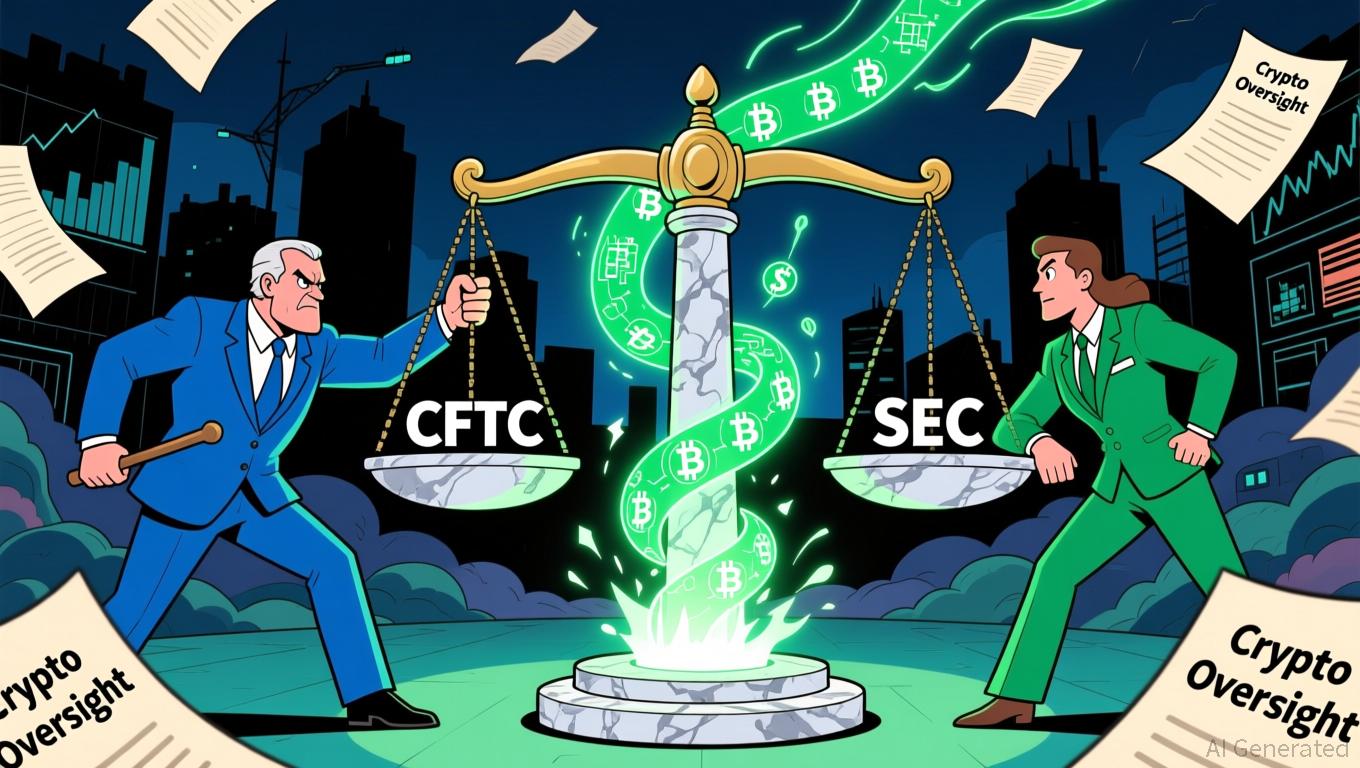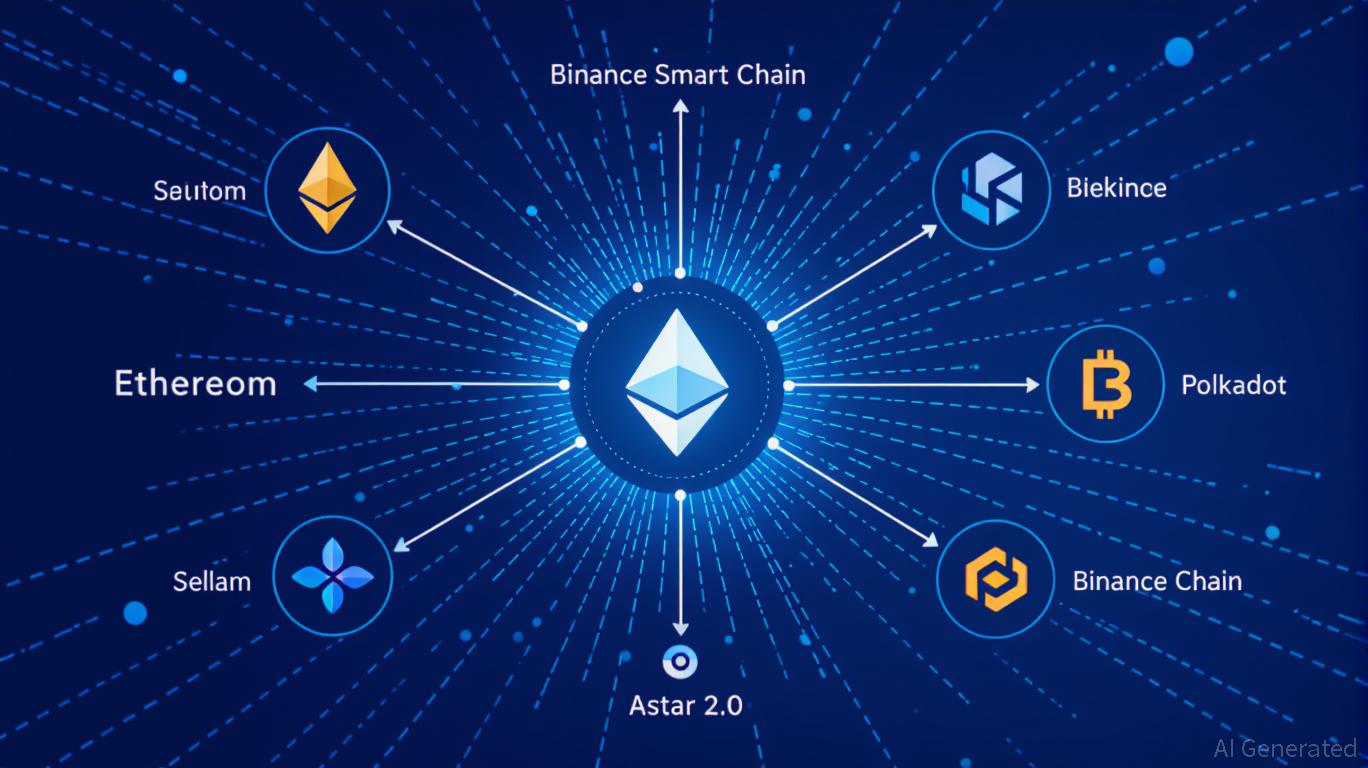Fed Policy Changes and Their Impact on Solana's Price Movements
- Fed's 2025 liquidity injections and leadership changes signal dovish shift, impacting global markets. - Solana's ecosystem benefits from increased liquidity, with TVL and transaction volume correlating to macro optimism. - Dovish signals drive capital toward risk-on assets like crypto, but inflation risks and policy uncertainty persist. - Fed's "barely restrictive" stance highlights balancing act between inflation control and systemic stability. - Investors must navigate macro-crypto linkages through div
Dovish Signals and Systemic Liquidity Pressures
Adding to the broader picture are leadership changes at the Federal Reserve, most notably

Macro-Crypto Linkages: Solana's Ecosystem Response
Although the Fed’s measures are mainly targeted at easing stress in traditional finance, their repercussions are felt in the crypto sector as well. Leading layer-one blockchains like Solana, which benefit from ample liquidity, have historically responded to shifts in monetary policy. While detailed on-chain data for Solana in November 2025 is not yet available, the general pattern suggests that increased liquidity often boosts demand for scalable blockchain solutions.
Dovish policy cues typically provide support for risk-oriented assets, including cryptocurrencies. As the Fed’s emergency actions help resolve liquidity shortages, investors may redirect funds toward sectors with high growth potential. Solana’s emphasis on rapid, affordable transactions and developer-friendly infrastructure makes it well-positioned to attract such investment. Additionally, the network’s total value locked (TVL) and transaction activity often rise in tandem with broader economic optimism, as observed during previous periods of liquidity expansion.
Strategic Implications for Investors
The relationship between Federal Reserve policy and the crypto market underscores the need for investors to understand macroeconomic trends when considering digital assets. Even indirect dovish signals can drive momentum in high-performance blockchain ecosystems by lowering the opportunity cost of riskier investments. For Solana, this translates to ongoing interest from both institutional and retail participants looking for scalable infrastructure.
Nonetheless, caution is warranted.
Conclusion
The Federal Reserve’s actions in November 2025—including emergency liquidity measures and leadership changes—indicate a subtle but important move toward a more accommodative policy stance. While these steps are largely precautionary, their effects on the crypto market, especially on high-performance networks like Solana, are significant. As liquidity dynamics shift, the ability to interpret macroeconomic developments and their impact on digital asset ecosystems will be crucial for successful investing in the year ahead.
Disclaimer: The content of this article solely reflects the author's opinion and does not represent the platform in any capacity. This article is not intended to serve as a reference for making investment decisions.
You may also like
Bitcoin News Update: CFTC's Broader Role in Crypto Regulation Ignites Discussion on Clearer Rules
- U.S. lawmakers propose expanding CFTC's crypto oversight via a bill reclassifying spot trading, diverging from SEC's enforcement approach. - Harvard University invests $443M in BlackRock's IBIT ETF, reflecting institutional confidence in crypto as a legitimate asset class. - DeFi projects like Mutuum Finance raise $18.7M in presales, leveraging regulatory momentum and transparent on-chain credit systems. - RockToken's infrastructure-backed crypto contracts attract long-term investors with structured yiel

DASH Aster DEX's Latest On-Chain Growth and What It Means for DeFi Liquidity
- DASH Aster DEX leads 2025 DeFi shift with hybrid AMM-CEX model and multi-chain support (BNB, Ethereum , Solana), boosting TVL to $1.399B and Q3 daily trading volumes of $27.7B. - Platform's 1,650% ASTER token price surge post-TGE attracted 330,000 new wallets, with 94% of BSC-USD volume ($2B/day) driving institutional adoption via Binance/YZi partnerships. - ASTER token mechanics enable 80% margin trading, 5-7% staking rewards, and governance rights, while annual 5-7% fee burns create scarcity and align

Astar 2.0: Leading a New Generation of DeFi and Cross-Chain Advancements
- Astar 2.0 introduces a zkEVM mainnet and cross-chain interoperability, slashing gas fees and enabling 150,000 TPS with 2025 scalability goals. - Strategic partnerships with Mazda, Japan Airlines, and Sony demonstrate blockchain's real-world applications in logistics, loyalty programs, and digital asset tokenization. - Q3 2025 data shows $2.38M DeFi TVL growth and 20% active wallet increase, alongside a $3.16M institutional ASTR token acquisition. - The platform aims to solidify its role as a foundational

Aster DEX Introduces New On-Ramp: Transforming Retail Participation in DeFi
- Aster DEX integrates institutional-grade custody and privacy tech (zero-knowledge proofs) to bridge retail-institutional DeFi gaps via BNB Chain partnerships. - TVL surged to $2.18B by late 2025 through yield-bearing stablecoins and hidden orders, attracting both retail and institutional liquidity. - Despite compliance gaps and wash trading concerns, Aster's Binance alignment and Coinbase listing signals growing institutional validation.
